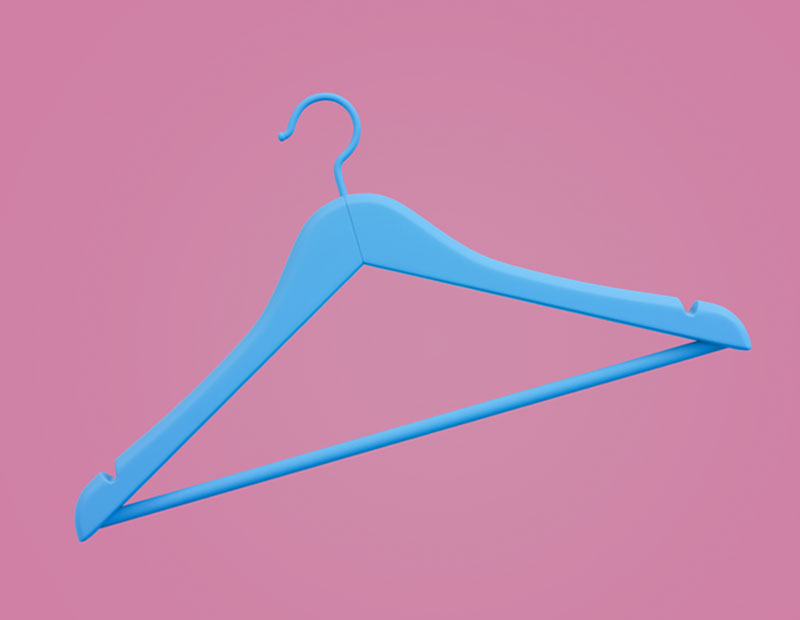

Re-Imagining the Fashion Industry
 24 April 2020
24 April 2020
 6min.
6min.
Do we really need fashion after all?! I guess this is the question ringing in the ears of tens of thousands these days, and I certainly am one of them. As a mother of two who traveled in mid-March to quarantine myself with my family in a rural area, I had to fit everything in two suitcases. So, imagine one side of a suitcase per person. That means shoes, underwear, jackets and even diapers! What I knew at the time was that I was allowed to take this much to fit in the car. What I didn’t know was that this actually is enough!
It’s clearly evident that the COVID-19 outbreak has disrupted normalcy in every way. Thousands of stores shut down. Shopping habits have altered. Items of desire have shifted. The retail market started to experience a massive change. While things such as kettlebells and yoga mats started selling like toilet paper, the demand for many others diminished significantly.
The Additional Challenge
However, when it comes to fashion, the industry started facing yet another layer of challenge. Something that shakes the industry to its core. Not being able to shop the normal way due to circumstances is one thing. Finding fashion ‘irrelevant’ altogether is another! How can you fight back such a mindset?
The longer people were quarantined, the more this thought started to settle in. Do we really need to buy more when our wardrobes are jam-packed with the clothes we’ve been stacking up for years? Does it really make sense to fly hundreds of people across the globe to attend a 40-minute-long fashion show? Is it worth it to create four collections a year? Do we even want any more black pants or white shirts or a 49th pair of sneakers?
The State of Fashion Report released in April by BoF(Business of Fashion) and McKinsey estimates that the fashion industry (apparel and footwear combined) will shrink by 27 to 30 percent in 2020. For the personal luxury goods industry (luxury fashion, luxury accessories, luxury watches, fine jewelry and high-end beauty), the global revenue contraction estimation in 2020 is 35 to 39 percent. And yet ironically (or should we say in a very well calculated manner) the first brands that raised an educational tone of voice, offered a helping hand, demonstrated a good deed were from the fashion industry!
Brands to the Rescue
The luxury conglomerate LVMH took the lead by starting to manufacture disinfectant gels in its French factories to help prevent a hand sanitizer shortage. The firm’s statement concluded with the note ‘’LVMH will honour this commitment as long as necessary’’. In addition, just a few days ago, the Louis Vuitton fashion house declared that they are re-opening their atelier in Paris to manufacture hospital gowns as well. Prada followed LVMH’s lead by producing face masks and sponsoring three hospitals’ ICU units. Gucci joined in, supporting the same cause. The American lifestyle brand Ralph Lauren pledged $10 million to help with coronavirus relief efforts. A name that’s been inseparable with Milan, Giorgio Armani, has started producing medical overalls in the company’s facilities in addition to donating 1.25 million Euros to combatting COVID-19.
As examples piled up one after another in the luxury scheme, the mass fashion brands also entered the picture. The H&M Foundation donated $500,000 to the COVID-19 Solidarity Response Fund. Inditex, the umbrella company for brands like Zara, Massimo Dutti and Oysho, has produced and shipped a great number of surgical masks to COVID-19 patients and medical professionals in Spain. The Barcelona-born brand Mango has committed to donating 2 million masks throughout the nation. These are just to name a few…
The moves of fashion industry players may as well be linked to paying tribute to their homeland and honoring their heritage. The excellent PR value these generous sacrifices bring and the respective contributions to the brand equities are of course other angles of the matter to keep in mind. Nevertheless, the question remains. How do brands move forward once the dust settles? What is the right road to take?
From Me to We
Fashion is a language that is used to tell a lot of different kinds of stories. And as a brand, your way of telling the story (along with your message itself) is the key to the hearts of all your stakeholders and consumers. That’s why making a genuine shift in your storyline from ‘me’ to ‘we’ matters the most during this time. In fact, this approach emerges as one of the main sources of energy that will fuel the brands’ growth in the near future to come. Creating a sense of community, a feeling of belonging is needed. To embrace this idea the right way, every person that interacts with your brand (not only form the outside on a consumer basis, but also from within) has to feel the desire to be a part of the story you are willing to put out there. This involves the people who produce garments for you in a faraway geography of the world and the logistics suppliers that enable you to bring garments to the doorsteps of consumers. Harnessing the community spirit within the brand and communicating it the right way is the way out of the industry’s dilemma facing irrelevance.
From More Quantity to More Quality
As the Dutch trend forecaster Li Edelkoort puts it during an interview with BoF, the coronavirus pandemic is bringing to light what is wrong with society, teaching us to slow down and to change our ways. Being the second industry that pollutes the planet the most, fashion is of course to take a part of the blame. To be honest, I think the industry has been expecting to pay some kind of price for a long time now. The invasion of the coronavirus acted as a catalyst, that’s all.
Now that we see the trending word ‘’sustainability’’ really come to life and feel the effects of acting against it in our day to day routines, brands that are giving importance to sustainability will be not be rewarded anymore. People will expect it to be a given. And for those brands still keeping a distance from supporting the cause, well, it looks like they’ll be wiped out from the fashion scene.
When it comes to luxury consumption, both Edelkoort and the McKinsey report predict that luxury consumers will be in search of even more qualified items. They’ll be buying less, being more selective on their choices, and agreeing on paying even more for the sake of superior quality.
Though the duration and ultimate severity of the pandemic remains unknown, it is apparent that the fashion industry is just at the beginning of its struggle. After all, it’s both demand and supply that are tangled in this perfect storm. That’s why strategizing during this time is extremely important. You need to be prepared to take the brand to the next level once the dust settles down. Even though we cannot predict when people will feel safe enough to try out garments in the changing rooms again, or even set a foot in a shopping mall, optimism remains. In an industry where an Hermès store is breaking sales records on the day it has opened ($2.7million) in Guangzhou in the middle of the pandemic, there is hope yet! And when it comes to my own quarantine with one half of a suitcase, well I can’t lie. I’d love to go out just to shop for a new pastel toned dress that would set my mood up for spring. That would be a celebration in itself!
















